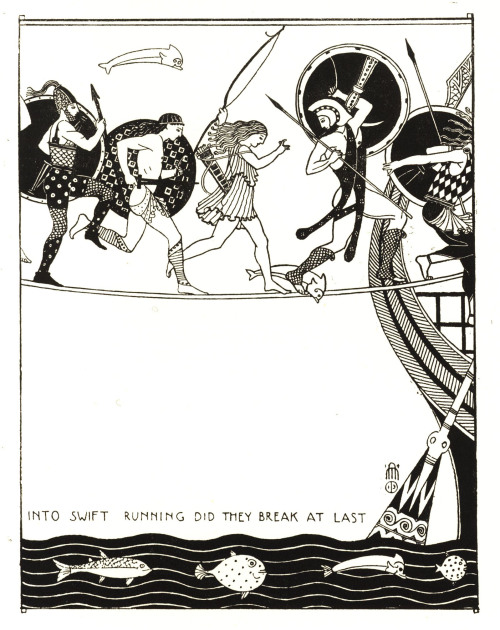uwmspeccoll: Staff Pick of the WeekMy staff pick is The Life and Death of Jason, a Metrical Romance
uwmspeccoll: Staff Pick of the WeekMy staff pick is The Life and Death of Jason, a Metrical Romance by William Morris with decorations by Maxwell Armfield. This edition was published by Dodd, Mead and Company in New York in 1917. William Morris was born on March 24, 1834 in Walthamstow, near London, England. He was known for being a being a leader in the Arts & Crafts movement, a socialist activist, and for founding the Kelmscott Press in 1891 which helped kick start the contemporary fine-press movement. Morris was also a poet and author, and his poem The Life and Death of Jason was first published in 1867. It chronicles the exploits of the Greek mythological hero Jason, leader of the Argonauts, and his quest for the Golden Fleece. Morris was a follower of the Pre-Raphaelite Brotherhood, and worked closely with the artist Edward Burne-Jones who illustrated several Kelmscott Press books, including the 1895 edition of The Life and Death of Jason. I chose this 1917 edition of The Life and Death of Jason, printed 21 years after the death of William Morris in 1896, because of Maxwell Armfield’s wonderful illustrations. Maxwell Armfield was a British artist and writer who was trained in Arts and Crafts principles. I first came across Armfield’s Jason early in my time at Special Collections when I worked as undergraduate assistant shelving books in the department. Now several years later and much wiser about William Morris’s lasting legacy, I really see the connection of this book has with earlier editions even though it is aesthetically very different. This is made clear in Maxwell Armfield’s “Note on the Drawings” which precedes the text: “In the case of an epic, one feels, I think, that the important quality of the décor should be unity not so much with the ideas of the text as with the book as book, and unity also within itself.This point of view must consider the embellishment not so much as illustration proceeding from the text as a continuation of the binding and page purposing to present the text to the eye; or as commentary on certain aspects of the matter not necessarily touched on at all by the author.”This holistic approach to book design is very much in line with Morris’s principles, even if the illustrations are more modern in appearance than the Kelmscott Press’s medievalist aesthetic. For an even deeper dive into Maxwell Armfield’s artistic interpretation of The Life and Death of Jason, I recommend the article: Illustrating Morris:The Work of ]essie King and Maxwell Armfield by Rosie Miles published for the Journal of William Morris Studies in 2004.View more posts about William Morris. –Sarah, Special Collections Graduate Intern -- source link
Tumblr Blog : uwmspeccoll.tumblr.com









